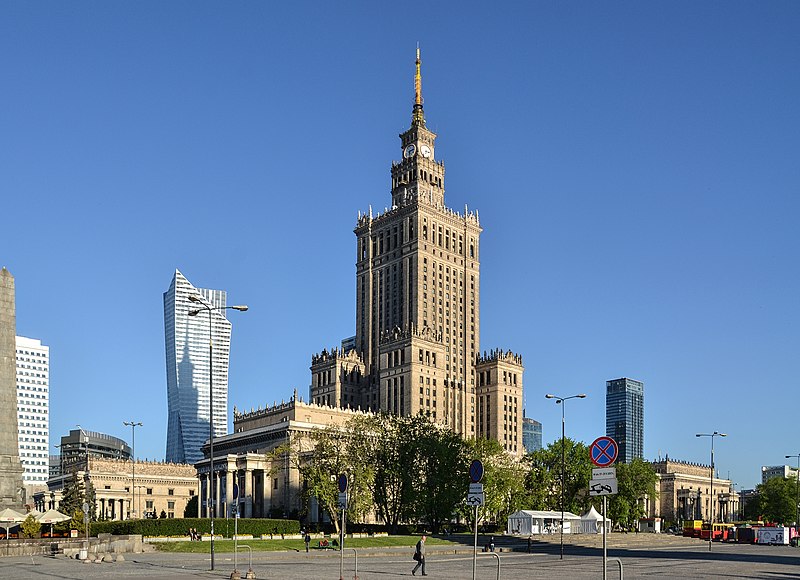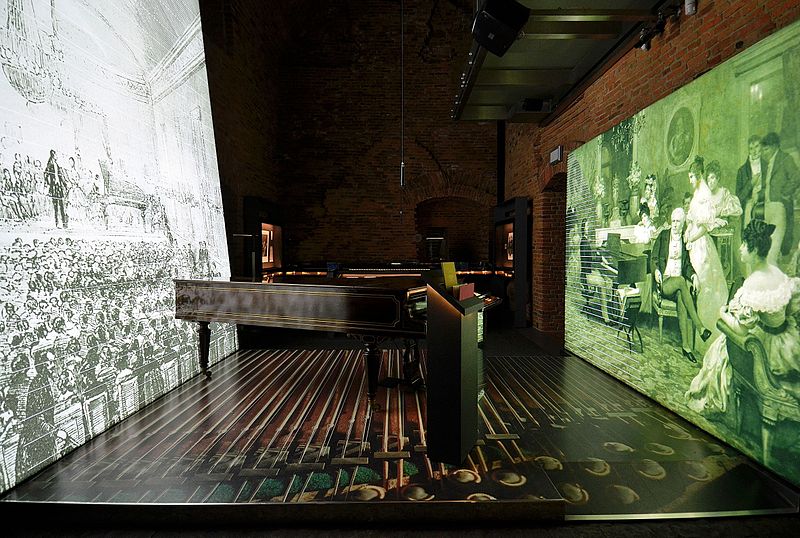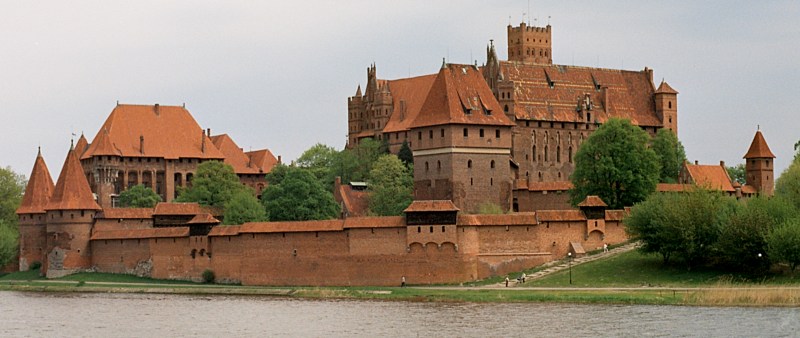Venue and the City
Conference venue
Conference will be held at the Faculty of Economic Sciences, University of Warsaw, Dluga 44/50 street, Warsaw, Poland. The capital of Poland, located in the center of the country, established in 13th century offers a wide range of touristic attractions. As a vibrant and exciting city it meets many expectations if its visitors. The Faculty is located within a 10 minute walking distance from the Old Town and within a 30 minute walking distance from the main campus.
Hotels
The Old town area offers various possibilities for lodging. The nightly rate presented below refers to standard room based on 2017 pricing tables. Reservations are available after a direct contact with the hotel.
| per night | distance to the venue | |
| Hotel Bristol | € 140 | 1,3 km |
| Hotel Sofitel Warsaw Victoria | € 140 | 1,3 km |
| Hotel Gromada | € 50 | 1,8 km |
| MDM Hotel | € 45 | 3,2 km |
| Hotel Rialto | € 70 | 3 km |
| Novotel Centrum | € 50 | 2,3 km |
| Ibis Stare Miasto (Ibis Old Town) | € 70 | 1,1 km |
Warsaw
Warsaw is located in the heart of Poland and in Central-Eastern part of Europe. Estimated time of a flight to Warsaw:
- Europe:
- Berlin – 2h20m
- Paris – 2h20m
- London – 2h
- Rome – 2h20m
- Madrid – 4h
- Asia
- Beijing – 2h30m
- Tokyo – 12h
- North America
- New York – 10h
- Toronto – 8h
Personal Excursions
The participants wishing to explore Warsaw and other places in Poland may find a list of popular attractions below.
 |
Old Town. The history of the Warsaw Old Town goes back over 700 years. Razed to the ground during World War II, the Old Town has been reconstructed from scratch (UNESCO World Heritage List). Worth seeing: the Royal Castle (with Bernardo Bellotto known as Canaletto collection, Rembrandt’s collection), the king Zygmunt column (raised in 17th century and honors the king that moved the capital to Warsaw in 1596), Mermaid Statue (a guardian and symbol of Warsaw). Worth tasting: ‘Wuzetka’ cake |
 |
Palace of Culture and Science (PKiN). Constructed in 1955 is a notable high-rise building in Warsaw is the tallest building in Poland (237 metres tall, including the structural 43-metre high spire), the eighth tallest building in the European Union and in a Top-20 in the Europe. It is the center for various companies, public institutions and cultural activities such as concerts, cinemas, theaters, libraries, sports clubs, universities, scientific institutions and authorities of the Polish Academy of Sciences. Motivated by Polish historicism and American art deco high-rise buildings, the PKiN was designed by Soviet architect Lev Rudnev in „Seven Sisters” style (and is informally known as the Eighth Sister). There is a possibility to enjoy Warsaw Panorama from terraces. |
 |
POLIN. Museum of the History of Polish Jews. The Museum of the History of Polish Jews opened in April 2013, the Core Exhibition, presenting the thousand-year history of Polish Jews, opened in 2014. It currently functions as a cultural and educational center with a rich cultural program, including temporary exhibitions, films, debates, workshops, performances, concerts, lectures and much more. The Museum stands in what was once the heart of Jewish Warsaw – an area which the Nazis turned into the Warsaw Ghetto during World War II. This significant location, coupled with the Museum’s proximity to the Monument to the Ghetto Heroes, demanded extreme thoughtfulness on the part of the building’s designers, who carefully crafted a structure that has become a symbol of the new face of Warsaw. The design by the Finnish studio Lahdelma & Mahlamäki was selected in an international competition. In 2008, with the building still under construction, it received the prestigious Chicago Athenaeum International Architecture Award (2008). It has been awarded with the European Museum of the Year Award 2016. |
 |
Chopin Museum. The Fryderyk Chopin Museum was established in 1954 and is dedicated to Polish composer Frédéric Chopin (1810 – 1849), a Polish composer and virtuoso pianist of the Romantic era who wrote primarily for the solo piano. He gained and has maintained renown worldwide as a leading musician of his era, whose „poetic genius was based on a professional technique that was without equal in his generation.” |
 |
Warsaw Uprising Museum. The Warsaw Rising Museum was opened on the 60th anniversary of the outbreak of fighting in Warsaw. The Museum is a tribute of Warsaw’s residents to those who fought and died for independent Poland and its free capital. The exhibition depicts fighting and everyday life during the Rising, keeping occupation terror in the background. Complexity of the international situation at the time of the Rising is portrayed, including the post-war years of the Communist regime and the fate of Insurgents in the People’s Republic of Poland (PRL). The second part of the permanent exhibition, presents the story of Allied airdrops. Its highlight is a replica of a Liberator B-24J bomber. Much of the exhibition has been devoted to the Germans and their allies, showing their actions in Warsaw as documented in official texts from the time of the Rising and in private notes. The stories of eye witnesses of the August and September 1944 events are played in Hall B. |
 |
Copernicus Science Centre. A science museum located on the bank of the Vistula River in Warsaw, It contains over 450 interactive exhibits that enable visitors to single-handedly carry out experiments and discover the laws of science for themselves. Copernicus Centre is located near Vistulan Boulvards – perfect place to spend an afternoon or evening relaxing in a cafes and bars by the river and enjoying the view and cultural offer. |
| Wilanów. Wilanów (Polish pronunciation: [vʲiˈlanuf]) is a home to historic Wilanów Palace, the „Polish Versailles,” and second home to various Polish kings. Wilanów Palace survived Poland’s partitions and both World Wars, and so serves as a reminder of the culture of the Polish state as it was before the misfortunes of the 18th century. |
Other interesting sights in Poland:
 |
Cracow is the second largest and one of the oldest cities in Poland. Situated on the Vistula River, the city dates back to the 7th century. Kraków has traditionally been one of the leading centres of Polish academic, cultural, and artistic life and is one of Poland’s most important economic hubs. It was the capital of the Crown of the Kingdom of Poland from until XVIIIth century. |
 |
Gdańsk is a city on the Baltic coast, Poland’s principal seaport and the centre of the country’s fourth-largest metropolitan area. Gdańsk was the birthplace of the Solidarity movement, formed in 1980, which played a major role in bringing an end to Communist rule in Poland and helped precipitate the collapse of the Eastern Bloc, the fall of the Berlin Wall and the dissolution of the Soviet Union. |
 |
Malbork castle was ordered built in the 13th century by the Knights of the Teutonic Order as their headquarters. Europe’s largest Gothic fortress is named after the Virgin Mary, the patron saint of the city and castle. The castle is actually three castles, making it the world’s largest brick castle. It took 230 years to build it, a majority of which was destroyed during World War II. Much of the castle has been restored since then. |
 |
Tatra National Park is located in southcentral Poland. Established in 1954, the park is mainly forests, meadows and numerous rock formations covering the Tatra Mountains. Spelunkers may enjoy touring six of the park’s 650 caves that are open to the public. The park also offers more than 30 alpine lakes as well as the Wielka Siklawa waterfall that is 70 meters (230 feet) high. Tatra, the most visited national park in Poland, will delight hikers with its 270 km (170 miles) of trails. |
 |
Toruń is best known as the birthplace of Copernicus, its old market place and Gothic town hall that the National Geographic Polska put on its list of the 30 most beautiful places in the world. As Torun escaped bombing during World War II, the city still boasts numerous buildings that date back to the Middle Ages. Construction on the town hall started in the 13th century, with many churches, including the Cathedral of SS. John the Evangelist and John the Baptist, dating back to the 14th century. This church is a must-see for travelers interested in Gothic paintings and sculptures, and Baroque altars. |
